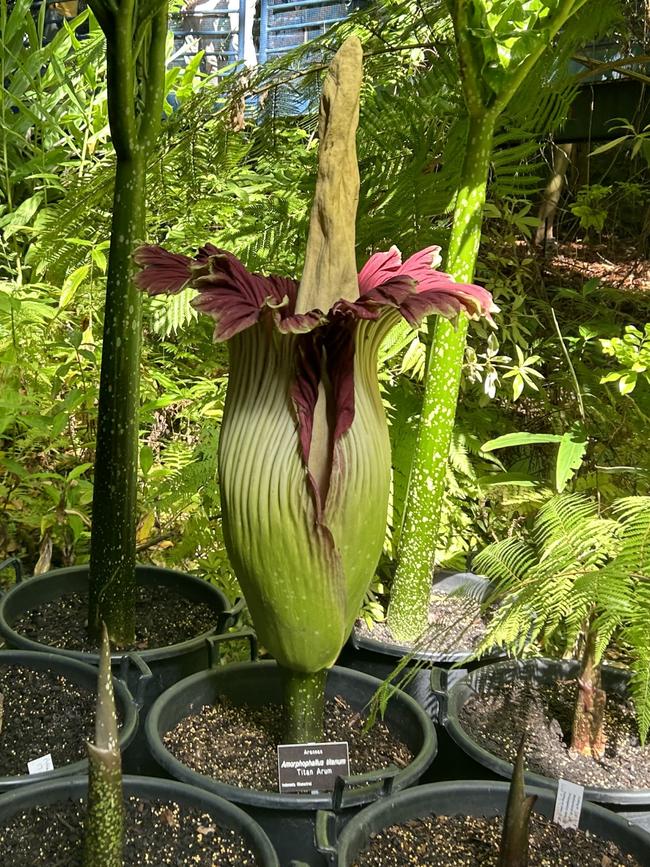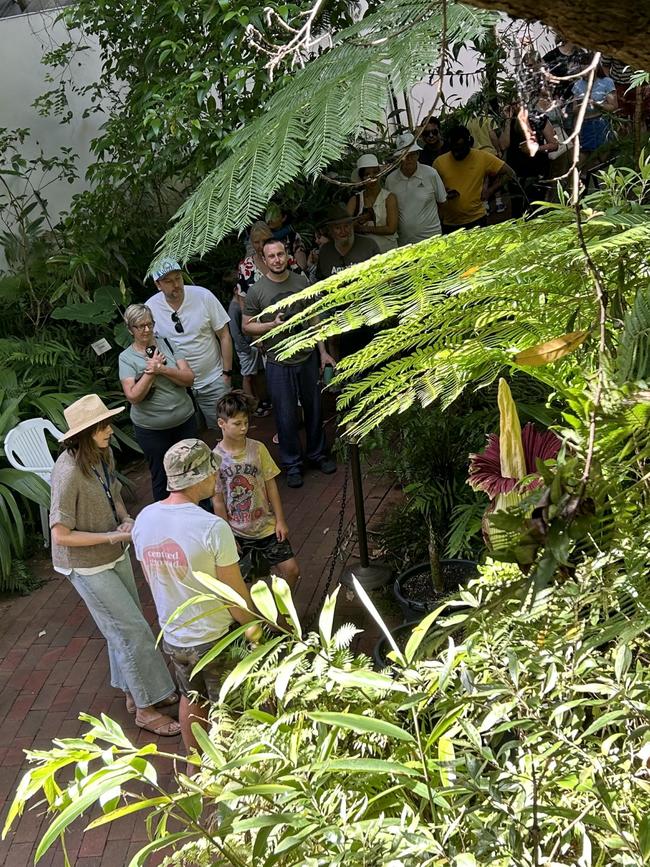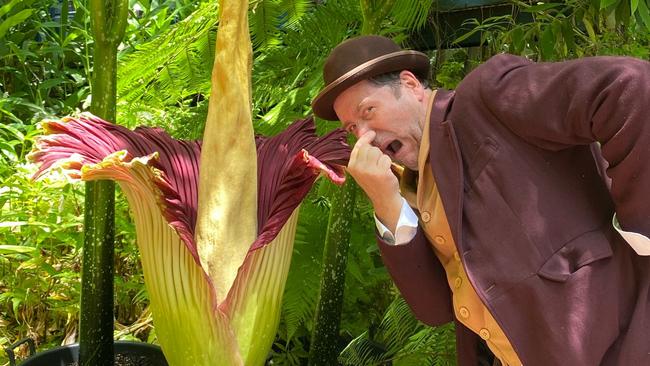Thousands flock to see Adelaide’s ‘corpse flower’, known for its rotting flesh scent
Its smell is likened to rotting flesh … but it didn’t stop thousands of South Aussies queuing for the once-in-a-decade sight and smell of the ‘corpse flower’ in bloom.
SA News
Don't miss out on the headlines from SA News. Followed categories will be added to My News.
Thousands of people have spent hours queuing for a rare glimpse – and a whiff – of the vile-smelling ‘corpse flower’ as it bloomed for the first time in years.
The Titan Arum is infamous for its heavy rotting-flesh scent, with this particular plant taking 10 years to grow from a cutting. It now will take three to five years to bloom again.
Measuring a mammoth 1.5 metres tall, the flower began opening about 2pm Sunday, with the Botanic Gardens alerting the news a few hours later.
About 1500 people queued at the gates of the Bicentennial Conservatory within the gardens that evening to see the rare event.
On Monday when the gardens opened at 7.30am, the queue had doubled to about 3000 people – with the longest wait time up to two hours.
A Botanic Gardens spokesperson said the last visitor to exit the gardens each night was at about 10.30pm.


Michael Mills, creative director of HeapsGood Productions, spent Monday entertaining and educating the queue as a Charles Darwin character.
“It was great to chat with the crowds and help break the boredom … and keep them up to date with information about the flower,” he said.
Mr Mills, of Enfield, said the flower smelled like “a bin from Christmas left in the heat for weeks”.
“If you really want to know what it smells like and want to try and experiment, put a lamb chop outside for a week and come back and smell it,” he said.

Botanic Gardens and State Herbarium horticultural curator Matt Coulter said this particular plant was propagated using leaf cuttings of an already established adult plant.
“It’s the first time this plant has flowered in its lifecycle and it’s the first of our ‘second generation’ plants to flower using the leaf cutting propagation method,” he said.
“This is a major breakthrough for us and shows that we’re able to successfully propagate flowering Titan Arum plants by growing them in a controlled environment, away from their natural habitat.”
The deadly-smelling bloom lasts about 48 hours before the large yellow spadix, the spike in the middle of the flower, begins to collapse.
Once collapsed, it can take up to five years for the plant to bloom again.
Native to the Indonesian island of Sumatra, the ‘corpse flower’ is listed as endangered with fewer than 1000 left in the wild.
Rainforest deforestation for unsustainable palm oil and palm oil alternative plantations has seen ‘corpse flower’ numbers rapidly decrease in the wild.




